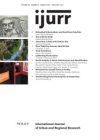Episodes of urban violence, particularly those inflected by religious sectarianism, have a particular dynamic of ordering urban spaces and identity publics, not just during the episodes themselves but long after. Using sketches of urban violence in Lebanon (Beirut) and India (Delhi and Ahmedabad), this article focuses on an emerging phenomenon associated with such episodes — one that orders city spaces around rehabilitative activities in such a way that these spaces, in both material and experiential terms, bear an integral relationship with aspects of religious activity. Religiously motivated aid practices, channeled through faith‐based relief organizations, enumerate vulnerable populations and circumscribe their continued survival within bounded spatial entities, especially in those contexts where long‐term ‘secular’ or state‐sponsored rehabilitative effort is lacking. These processes of emplacing religiously marked populations in urban environments suggest the potential for a religiously coded bio‐politics, or a practice of governmentality that puts agents other than the state in a position of exerting power over continued social life. The three sketches variously illustrate how the intertwining of religion with survival within contemporary urban socio‐spatial formations suggest powerful intimacies between religion and individual or community life, which at the same time make place for alternative claims of governance, security and citizenship.
Details
Written by:
YASMEEN ARIF
Digital Object Identifier (DOI)
10.1111/j.1468-2427.2008.00804.x
About DOI
Read full article as PDF
Read full article as HTML
See the references for this article
